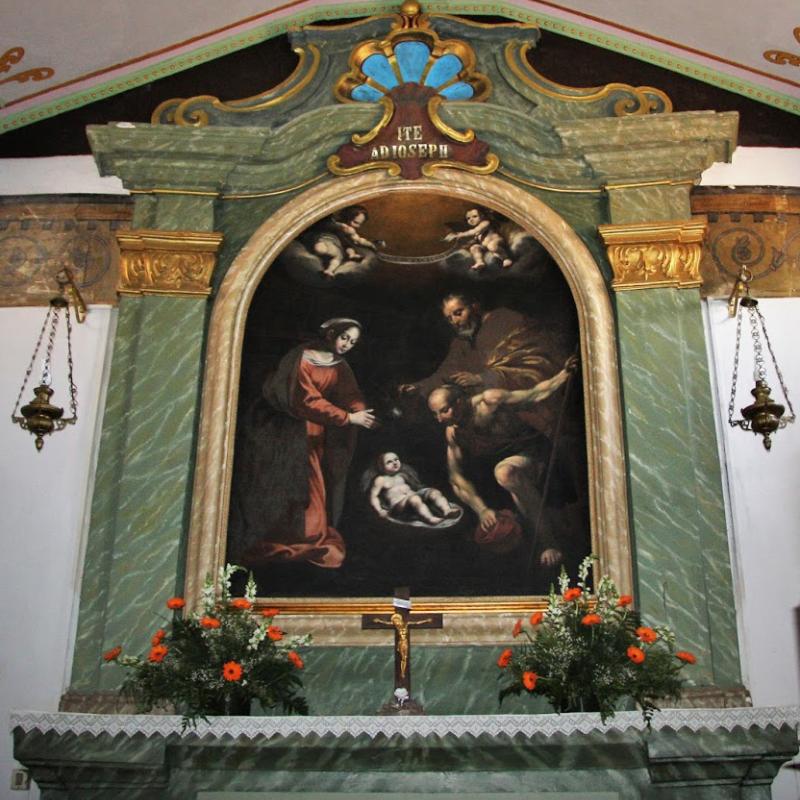The befana of Latera
5th January each year
This tradition was recycled and enhanced a few years ago by a group of young people who, despite economic and logistical difficulties, committed themselves to recovering and continuing an interesting and ancient folk tradition. At Christmas time, the group revives this custom with a travelling show through the streets of the village . The various characters from the tradition (the count, the hag, the butler, the questors) and a large group of musicians , walk the streets of the village for a collection throughout the afternoon of 5th January, singing and playing. At the end, using the products obtained through the collection, the participants (more than 20 of them) organize a dinner.
Feast of 1st March
First week of March
The church of St. Joseph, built in the late 12th century, preserves a prestigious Nativity, painted in the 17th century. In 1875, the church was the scene of a miraculous event, which is why to this day, every 1st March this event is commemorated with great festivities.
Tradition has it that on that date, at five o'clock in the afternoon, some of the faithful saw the image of the Virgin Mary open her eyes: immediately the church filled with people and the miracle was repeated.
Good Friday Procession
Latera's Good Friday Procession is one of the oldest in the province of Viterbo. It was instituted by Duke Pietro Farnese in the 17th century and is characterized by ancient folk and liturgical chants dating back to the 13th century.
A key role in the procession is played by the Confraternities, specifically the Confraternity of Mercy, which has always taken care of the liturgical objects. In particular, members of this Confraternity see to the lighting, for which the characteristic glass "flasks" are used. The "flasks" are opened at the bottom using a fiery iron, which cuts the glass at the desired point on contact. These original candle holders are then mounted on vertical iron structures of various shapes and sizes, which by illuminating the processional route, create a scene of great beauty.
The liturgical songs accompanying the procession are performed by some members of the three Lateran confraternities, which are: Gonfalone and Rosary (Our Lady), Blessed Sacrament and Mercy. The chants are of exclusive oral tradition and since 2010, they have been named a "sound heritage of the Italian State," recorded at the State Record Library and transferred onto a CD. The liturgical chants are those composed by Jacopone da Todi, most notably Stabat Mater and then Christus and Miserere.
The procession, which begins with the re-enactment of a Gospel scene (either the Last Supper or the prayer in the Garden of Olives or the Roman trial), after the so-called ignominious walk through the streets of the Historical Centre, ends with the Crucifixion scene.
Agricultural Festival of St. Isidore
Second Sunday in May
The festival of St. Isidore is the feast of the earth, of nature, with roots deep in the Middle Ages.
There are two keys to interpretations of this event (religious procession, scenic representation of the contrast, social lunch):
- the first is the contrast between the latifundium and the peasant, the latter having been humiliated by the master who even forbids him to sanctify the feast;
- the second is the religious aspect. A devotion of the poor themselves outside the official rules of the church, perhaps less learned but certainly closer to the needs of the people.
This traditional feast had been in disuse for about 30 years and was revived in 1993, also as a means not to disperse this cultural heritage still alive in the memory of the community.
Canton Fair
First Sunday in September
This fair, which comes from ancient traditions, used to attract farmers from surrounding villages to buy and sell livestock.
It is one of the most important goods and livestock fairs in the area and winds its way through the streets of the new expansion zone, involving dozens of hawkers and animal owners (now almost exclusively horses).





